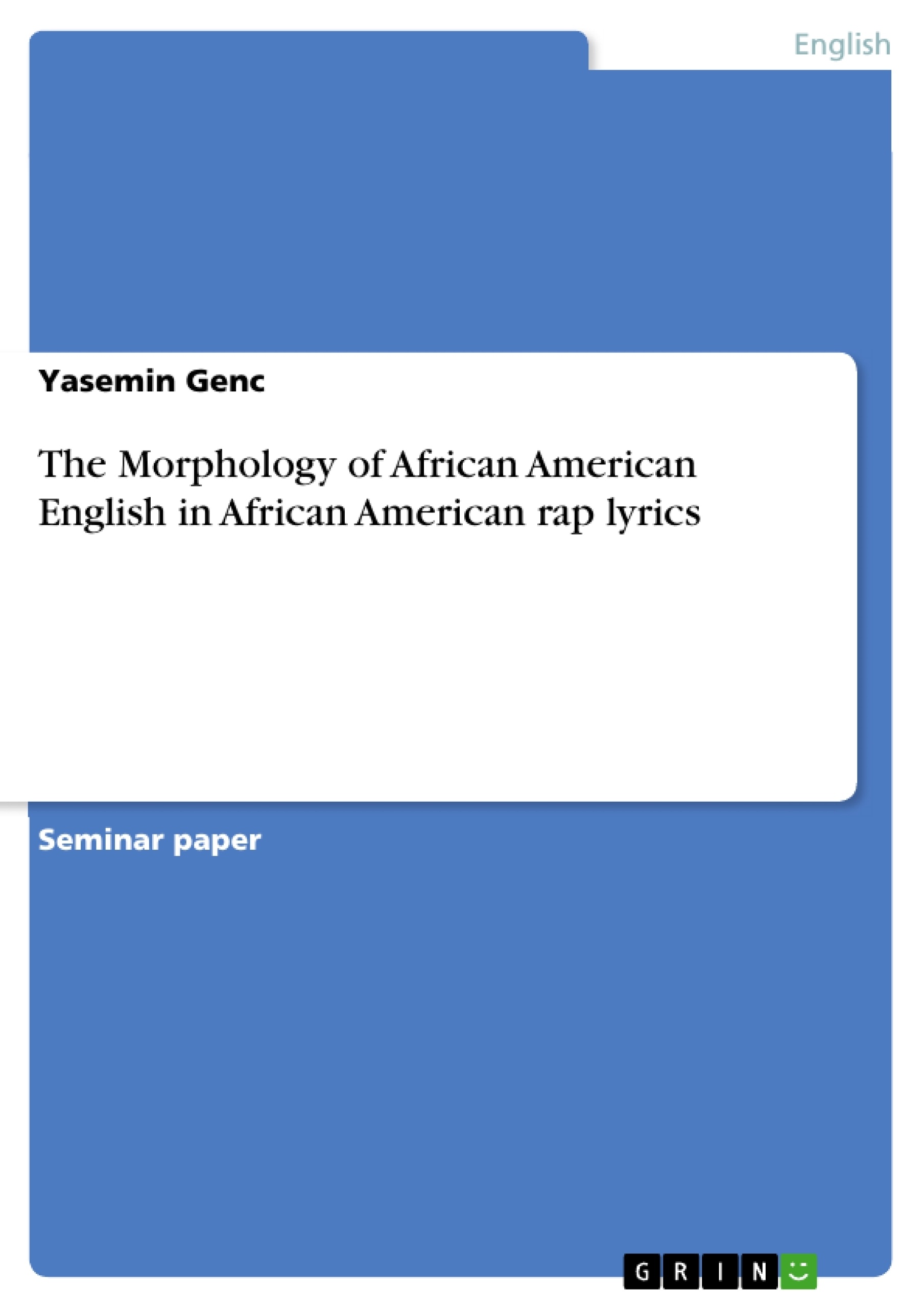This term paper will mainly focus on the morphological studies of Lisa J. Green who is a Professor in the Department of Linguistics at the University of Texas and who published a linguistic introduction to African American English which focuses on the phonological, morphological, syntactical and semantic properties of this variety of American English.
In this paper we will firstly have a closer look at the well researched areas of African American English like origins and (social)history. Subsequently, certain morphological features like verbal –s, past morphology, genetive marking and copula absence will be illustrated. To bring evidence for the linguistic theses concerning morphology that will have been made in the first part, rap texts by two well-known African American rap artists will be taken into account. This is due to the fact that authentic texts with sufficient morphological features of African American English are not easy to find. However, rap lyrics offer a wide range of morphological features that can provide evidence for many linguistic theses illustrated in this paper. On account of this, this paper will analyze 60 rap texts by the African American artists Kanye West and Talib Kweli.
The aim hereby is to see whether African American English consequently pursues a morphological pattern or if the features occur optionally. Is the widespread prejudice among many non-linguists true? Namley that African American English is a non-rule-based variety of English?
Inhaltsverzeichnis (Table of Contents)
- Introduction
- Background of AAE
- Terminology and Short Outline
- Debate on the Origin and Development of AAE
- The sociohistorical background for the evolution of AAE
- Morphological Features
- Verbal-s
- Past Morphology
- Absence of Attributive Possessive -s & Genetive Marking
- Copula Absence
- AAE features in African American rappers' lyrics
- Verbal-s
- Past Morphology
- Absence of Attributive Possessive -s & Genetive Marking
- Copula Absence
- Conclusion
Zielsetzung und Themenschwerpunkte (Objectives and Key Themes)
This paper examines the morphological features of African American English (AAE), focusing on its presence within the lyrics of African American rap artists. The main objective is to determine whether AAE follows a consistent morphological pattern or if features appear variably. This study aims to understand if the widespread belief that AAE is a non-rule-based variety of English holds true. Key themes explored in the paper include:- The historical development and linguistic origins of AAE
- The role of social and historical factors in the evolution of AAE
- The morphological features of AAE, such as verbal -s, past morphology, genetive marking, and copula absence
- The analysis of rap lyrics by Kanye West and Talib Kweli to observe the manifestation of AAE morphological features
- The debate on the rule-based nature of AAE versus the perception of it as a non-standard variety
Zusammenfassung der Kapitel (Chapter Summaries)
The introduction provides context for the study, highlighting the significant amount of research on AAE while acknowledging a lack of focus on its morphological patterns in contemporary linguistics. The paper emphasizes the work of Lisa J. Green, whose linguistic introduction to AAE is used as a foundational source. The study aims to analyze rap lyrics to explore AAE morphology, as these texts offer a rich source of relevant linguistic features. The "Background of AAE" chapter delves into the terminology used to refer to AAE, tracing its evolution from older terms like "Black English" and "Ebonics" to the contemporary preferred term "African American English." It also explores the informal nature of AAE and its unique vocabulary, with emphasis on the distinction between words and phrases used by all speakers and those specific to certain age groups. The "Debate on the Origin and Development of AAE" chapter examines the three main perspectives on the origins of AAE: the Anglicist position, the Creolist position, and the Neo-Anglicist position. The chapter discusses the arguments of each perspective, highlighting the varying viewpoints on the role of British-based dialects, creole languages, and African languages in the development of AAE. The "The sociohistorical background for the evolution of AAE" chapter explores the interaction between Black and White communities since their initial encounter in the New World. It emphasizes the heterogeneous nature of this interaction and how it influenced the learning of "approximations of white dialects" by slaves, ultimately contributing to the development of AAE. The chapter highlights the importance of regional differences, demographics, and economics in shaping the evolution of AAE.Schlüsselwörter (Keywords)
The key terms and concepts explored in this paper revolve around the study of African American English, focusing on its morphology, origins, and its presence in the lyrics of African American rap artists. The paper explores the historical and social factors that have shaped the development of AAE, delves into the debate on its origins, and analyzes its distinctive morphological features. Key terms include: African American English, Black English, Ebonics, AAVE, morphology, verbal -s, past morphology, genetive marking, copula absence, rap lyrics, Kanye West, Talib Kweli, rule-based language, non-standard language.- Quote paper
- Yasemin Genc (Author), 2009, The Morphology of African American English in African American rap lyrics, Munich, GRIN Verlag, https://www.grin.com/document/138198



